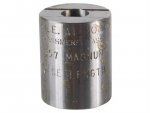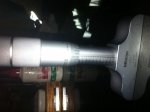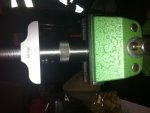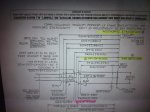Hi Chris,
I might not have explained myself properly.
I thought you were talking about bumping your shoulders back (headspace) a few thousandths of an inch farther, than you initially wanted?
What are you actually measuring, when you talk about headspace, as I'm having a hard time visualizing your 'gage' and how you're using it?
The brass was fired before I ever received it and from what I understand brass expands and contracts.
So if I fired the brass with the extra few though it can't contract without first expanding unless at a very low temp. Does this sound about right?
Brass does expand and contract, but parts of a case may expand and contract at different rates and not be linear. M.L McPherson describes this phenonemon as being a big culprit in 'runout'. Also, as brass work hardens, it might lose some of that elasticity and things won't return to zero, so to speak.
The gauge has a 0.005" recess (a step if you will) from the top of the gauge to the bottom of the gauge.
I put the bar of the mic across the high point ( max) of the gauge and dial down till the gauge rod touches the head.
From this I'm getting between 0.000" to 0.007".
If the gauge is above 0.005" (case head min) I have separated them into a separate pile for further work to be done if possible to shrink that extra 0.001-2" (which I don't think is possible) or if safe to use use them.
It almost sounds as if you're measuring case head expansion, which is leading to the my confusion, even today.
Do you have any pictures of how you're measuring and what?
And:
I should have mentioned that I'm using the top of the gauge as the datum.
The datum line on a case, is generally halfway up the shoulder proper (when we're talking about headspacing a case/cartridge, at least) and for the case head, it's referenced at a X point in inches/mm, above the extractor groove, or the case head's face/bottom, on some of the prints I've seen.
So in effect the measurement readings I'm getting are 0.000" (max) down to 0.005" (min) then further down another 0.001" (0.006") or 0.002 (0.007").
Unless somebody else can figure out what you're describing, post a picture if you can? You can upload them from your PC now, IIRC.





